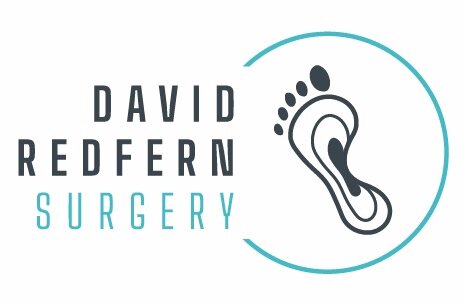Bunionettes
(Tailor’s bunion)
Often referred to as tailor’s bunions, these are prominences on the outer border of the foot. They are usually pain free but occasionally cause significant pain and difficulty with footwear.
They are caused by malalignment of the little toe and 5th metatarsal. Bunionettes are really mirror images of bunions. They are often incorrectly referred to as tailor’s bunions - it was suggested that tailors were at particular risk due to their occupation but this is a myth.
Redfern type 2 bunionette. A prominence over the outside of the foot and the 5th toe deviating towards the other toe - rather like a mirror image of a bunion deformity affecting the big toe.
As with bunions, most bunionettes are symptom free. If they are symptomatic then sometimes surgery will be recommended. There are 2 types of bunionette (Redfern classification) - either the little (5th) toe is straight (Redfern type 1) or the little (5th) toe is deviated inwards towards the other toes (Redfern type 2).
Mr Redfern has published on techniques to correct both types of buunionette using minimally invasive surgery via tiny keyhole incisions and without the need for any metalwork fix the underlying bones.
Redfern type 1 bunionette - bump but 5th toe straight
Mr Redfern’s minimally invasive surgery involves using tiny cutting burs (drills) to cut and re-align the bone and remove the prominence.
Intra-operative X-rays showing immediate correction of a type 2 bunionette once the metatarsal has been realigned.
The surgery can be carried out as a daycase procedure under either general or local anaesthetic, with immediate full weight bearing in a protective shoe. A short fracture boot is usually worn for 4-6 weeks afterwards once the tiny incisions have healed.
Outcomes are excellent following this type of surgery and in the region of 95% of patients report a good or excellent outcome. The risks of surgery include those of infection (<1%), wound or scar problems (<1%), nerve problems (1%), bone healing problems (5% slower than expected and <1% fail to heal requiring more surgery), continuing or new symptoms. In over 15 years of undertaking this surgery, I have not seen recurrence of the bunionettes after successful correction.




